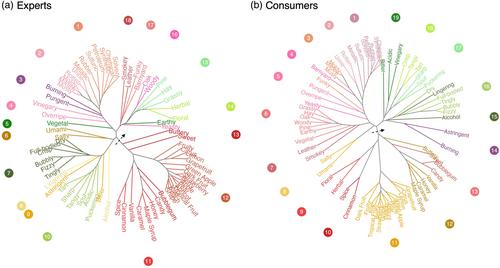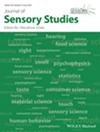Flavor wheels are visual tools built from standardized sensory lexicons that are used in many different industries to improve communication, marketing, and quality discrimination among products. To date, flavor wheels have been developed for spices, coffee, wine, beer, and many other foods and beverages—yet no flavor wheel has been constructed for hard cider. While there is no single established method for constructed flavor wheels, most approaches are based on sensory descriptive analysis (DA) and free word sorting activities that investigate the semantic similarity and dissimilarity of descriptive terms. This research study utilized multiple DA studies for the generation of a sensory lexicon, followed by independent word sorting tasks with cider industry professionals (N = 40) and untrained consumers (N = 58) to establish two flavor wheels that are broadly understandable to a variety of industry stakeholders. Based on the results of DISTATIS and additive tree partitioning, this research showcases a workflow for developing and refining flavor wheels that incorporate both stakeholder and researcher input and can be built upon by other analysts.
This research demonstrates an accessible methodology for developing flavor wheels that incorporates input from diverse parties and considers the semantic associations of terms used by cider consumers and industry professionals. The proposed methodology is a useful framework for other sensory scientists seeking to efficiently develop flavor wheels for multiple audiences. As a demonstration, this research also delivers two flavor wheels—one that highlights discrepancies in how industry consumers and producers semantically understand sensory experiences compared to trained sensory personnel, and a second wheel that showcases how hard cider can more objectively be described. Together, these flavor wheels are tools for improving sensory communication, education, and marketing in the US hard cider industry.



